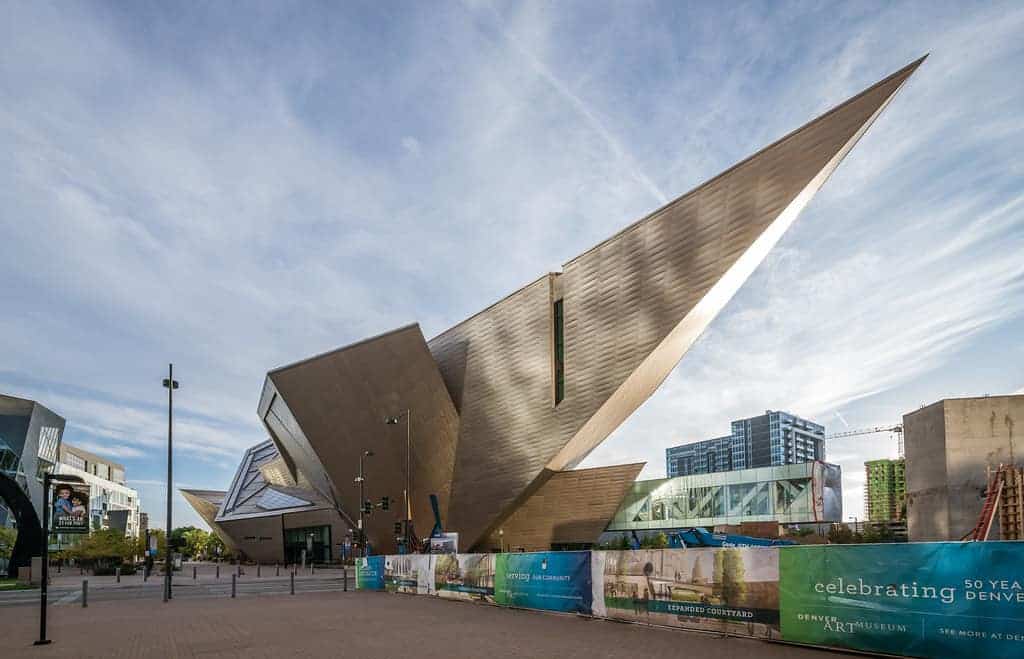 “This is a fantastic exhibit — brilliant! There’s Pee-wee Herman!”
“This is a fantastic exhibit — brilliant! There’s Pee-wee Herman!”
We were in the Denver Art Museum’s Frederic C. Hamilton Building, standing in front of “Headless” by Michael Joo — 28 identical terracotta headless Buddhas, a few feet high, meditating in neat rows. Twenty-eight heads from old action figures and dolls suspended from the ceiling by nearly-invisible strings replaced the Buddha heads: X-Men’s Wolverine, Doc, one of the seven dwarfs, and, of course, Pee-wee Herman.
“Any idea what it means?” asked the man to my right.
“No,” I said. “Sorry.”

My wife chimed in. “You can only go so far with enlightenment, but inside we all have a crazy little head that gets in the way.”
The man nodded, happy with the explanation; I laughed. The truth is I’ve given up trying to understand a lot of art, and while I can certainly appreciate the aesthetics of contemporary art I wouldn’t necessarily want all of it in my home.
That’s become my litmus test for good art — would I want to look at it every day? As I looked around one of the temporary exhibits in the Anschutz Gallery on the second floor of the new addition, I was forced to answer “no” more often than not. I wouldn’t want the painting of the man with a penis for a nose hanging in my living room, and there isn’t much room over the mantle for the painting with large geometric shapes and Teletubbies.
I’ve seen more impressive art in other museums — The National Gallery and the Tate in London, the Louvre in Paris, the Rijksmuseum and Van Gogh Museum in Amsterdam — but I’ve never been quite as entranced with the building itself, with the way it is art instead of simply holding art.
Designed by Daniel Libeskind, the internationally renowned architect who received the commission to design New York’s World Trade Center reconstruction site (though he’s since left the project), the Hamilton Building is easily one of the most interesting and attractive buildings I’ve been in. The exterior is constructed of strong lines, geometric shapes and odd angles; it looks like a shimmering, metal ship with its prow jutting out above 13th Avenue, and the sunlight ripples across the titanium shell as if it’s reflecting off unseen water.
It’s a bold design: “The shape came to me as I flew over the Rockies. I copied the shapes outside my airplane window,” Libeskind said.
The unconventional design is consistent inside, too. The walls are rarely a perfect vertical, though the museum has used the available space well; most of the artwork is hung on freestanding sections of wall constructed in the middle of the galleries, not on the angled exterior walls.

As I ascended the staircase to the third level I experienced a brief moment of vertigo. The walls sloped toward and away from me, distorting all my previous ideas of interior space. Looking down from the third-level balcony the atrium reminded me of one of those optical illusions where parallel lines appear to bend and curve, though Libeskind seems to have left very few parallel lines in the building.
The Hamilton Building does hold some amazing artwork — Joo’s headless Buddha installation grew on me, as well as a series of three Mona Lisa replicas, much larger than the original, in which she is disrobed and pregnant. The first-level Gallagher Family Gallery hosted an impressive collection of Japanese art, and the third level held a few of Monet’s paintings and several of Andy Warhol’s famous Campbell’s soup cans.
The Dietler Gallery of Western Art, showcasing traditional artwork of the American West, seemed quintessentially Coloradan. Sean Landers’s massive painting, “Pater Noster,” is a journal written in words that flow across the canvas — of all the artwork in the Hamilton Building’s 146,000 square feet of space, this was my favorite.
Unless you count Libeskind’s “Frederic C. Hamilton Building” — I rather liked that one. Maybe the most impressive artwork in the building is the building.
If You Go
100 W. 14 th Ave. Parkway, Denver; 720-865-5000
www.denverartmuseum.org
Open Tuesday through Thursday and Saturday from 10 a.m. to 5 p.m.; Friday, 10 a.m. to 10 p.m.; Sunday, noon to 5 p.m. The museum is closed on Mondays.
Non-member pricing:
Adults: $10 Colorado residents, $13 others
Seniors & Students: $8 Colorado residents, $10 others
Youth (6-18): $3 for Colorado residents, $5 others Children (0-5): Free
Joh Bishop is a graduate of Metropolitan State College of Denver’s journalism program. He is a native of Michigan.
From the Editors: We spent a heap of time making sure this story was accurate when it was published, but of course, things can change. Please confirm the details before setting out in our great Centennial State.

